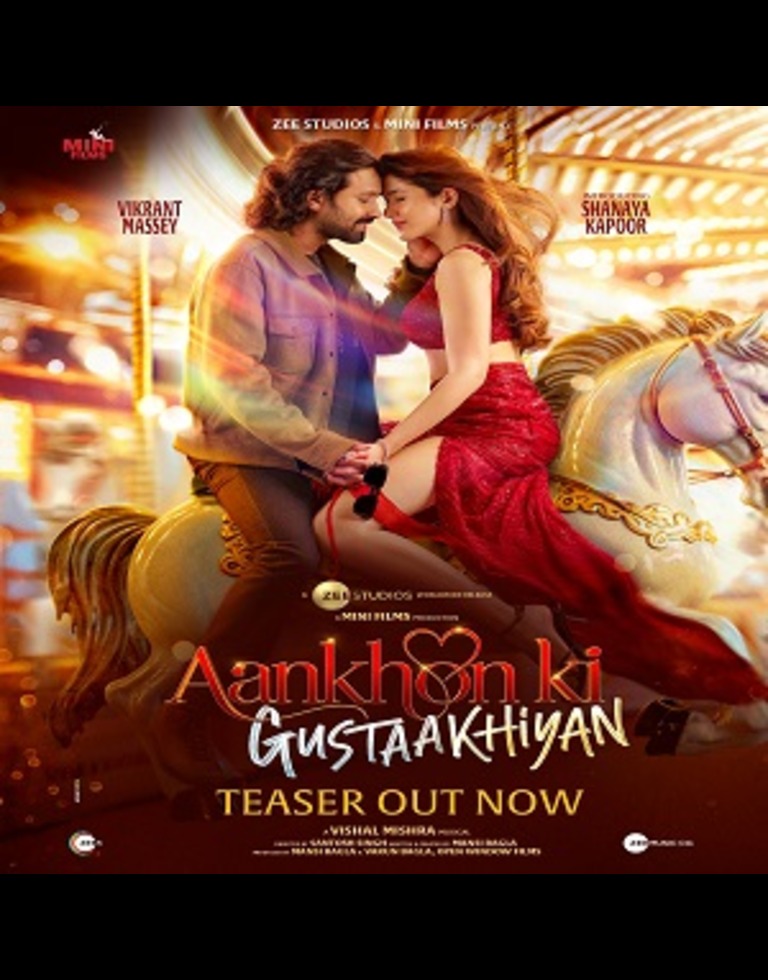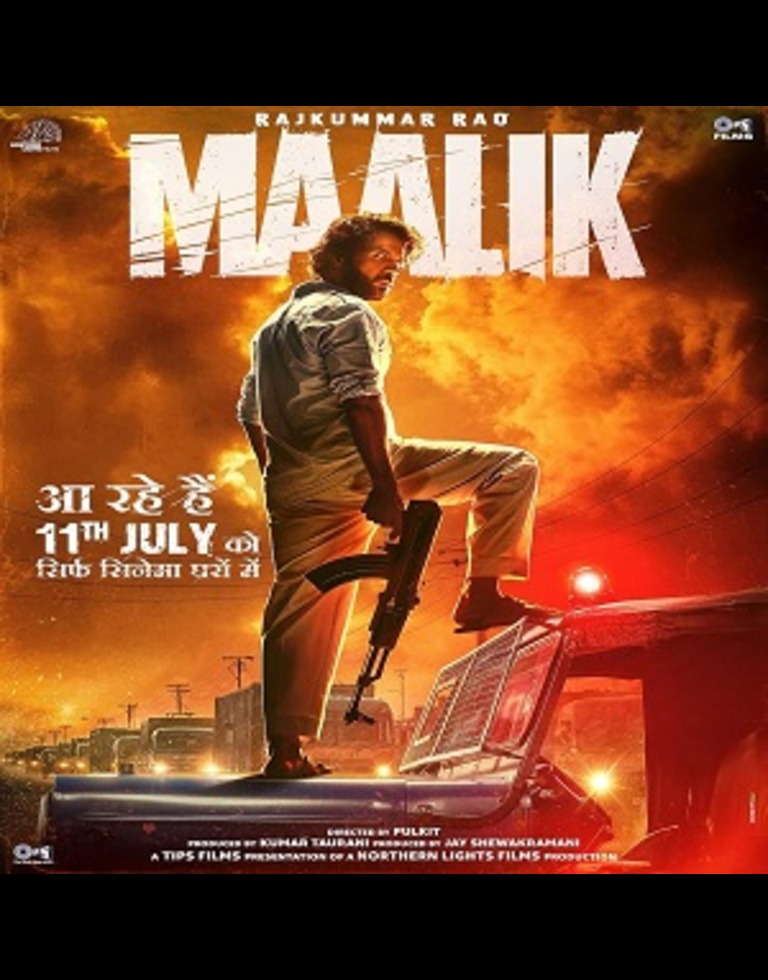
 There is something outlandish yet gorgeous about the K.G.F franchise that they no longer make such films. That they no longer imagine scenes propelled by absolute madness. After all, K.G.F films are written on steroids.
There is something outlandish yet gorgeous about the K.G.F franchise that they no longer make such films. That they no longer imagine scenes propelled by absolute madness. After all, K.G.F films are written on steroids.
There is a moment in K.G.F: Chapter 2, where Rocky Bhai (a rocking Yash, bathed and cleansed in masculine orgy) takes a machine gun out to blow up a police station, in the garb of a “field test”.
With a cigarette hanging from his lip, he fires aimlessly to show his prowess as bullets zoom past the station and everything in between.
Bullet casings drop to the ground and Bhai walks in slow-motion to light up his cigarette from the gun’s nozzle with an equally electrifying background score by Ravi Basrur.
There, in that one single shot, Prashanth Neel highlights what the K.G.F films are for: to create a delirious cinematic experience, where there is barely any time for us to contemplate logic and sense.
There is only one way to look at K.G.F for it to work for you and that is to partake in the madness it offers — from scene to scene; one set piece to another; one giddy stunt choreography to the next.
The most amazing achievement of Prashanth Neel has got to be the marrying of the Hollywood motifs from influential figures — Coppola, Scorsese, Mel Gibson to Peter Jackson and George Miller — with masala flourishes from Indian filmmakers.
This meeting of the two worlds is powerful and visceral, even if it remains just a possibility throughout. Let me illustrate this marriage with the most terrific scene of K.G.F Chapter 2 which concerns Bhai but isn’t about him.
Reena (played by Srinidhi Shetty) attempts to convey to Bhai that she is pregnant with his child. She doesn’t straight away tell him but drops hints that Bhai, who is preoccupied with business, doesn’t catch.
Now, the usual way is to make Reena say she’s going to become a mother or Bhai is going to become a father. Instead, she says, “ amma vara poranga,” a callback to Bhai’s emotional struggle with memories of his mother. Not to mention the lullaby score in the background. I choked. This is masala and it is pure.
Come to think of it, the only emotional stake that is anchoring both the K.G.F films is the sufferings of Bhai’s mom, which again is a throwback to a popular trope from the masala universe of a previous era — but.
There is something singularly distinct about Prashanth Neel’s idea of masala in comparison to SS Rajamouli’s, who, we must acknowledge, brought about a much-needed renaissance to the masala tradition of Indian cinema. Neel’s films are more focused on the extremes, while Rajamouli’s are a work of visionary.
Speaking of tradition, it is truly a remarkable decision to cast Sanjay Dutt as Adheera. There could possibly be no other actor to have done justice to a film universe teething with masculine rage than Dutt, who used to be the poster boy of hyper-masculinity at one point.
Remember Vaastav? Khal Nayak? But the reason to induct Dutt appears as if Prashanth Neel wanted the actor to repeat his menacing looks as Kancha from Agneepath. Although when Yash and Dutt face-off, it does feel like the latter has passed on the hyper-masculine muscle man that he is known for, to the former.
Which in itself could have been a befitting conclusion to celebrating the Angry Young Man heroes of a bygone era.
The big problem is the terribly underwritten female lead. Srinidhi Shetty’s Reena suffers from a severe case of Stockholm Syndrome, and it’s hard not to feel sympathetic for why she gets relegated to the background.
Even smaller roles like Easwari Rao’s character get neatly rounded arcs. The film also runs the risk of feeling bloated, especially in the pre-interval portions, when layer after layer gets packed in.
There are one too many villains and crisscrossing storylines. In fact, I wasn’t sure if the final few minutes do justice to events that have taken place over two films and eight years. However, the towering performance of Yash, rooted in nonchalance, keeps us hooked.
His emotional turns, more than the playful bits, are more effective, and his enraged eyes say way more than his trademark broken English does. The dialogues too add to the undercurrent of humour, but then, there are all these lines that could so easily be turned into motivational posters: “Greed is good… Greed is progress…”

Another writing highlight of KGF: Chapter 2 is how a buildup song also acts as a quick narration of the first part. It is ingenious and inventive. Discussing logic serves no purpose in such a film, but for what it’s worth, every actor stays true to Prashanth’s world.
The technical team too steps up, conjuring mesmerising visuals to keep us invested in the world of KGF. Keeping the colour palette to a minimum, cinematographer Bhuvan Gowda gives us stunning visuals that capture the grandeur of the project without ever showboating.
No aspect of the opulence feels wasted or excessive. Be it the vast expanses of the mines or the never-ending shots of vehicles including cars, planes, ships, bikes, helicopters… the imagery is glorious. Any showboating comes from the edit table of Ujwal Kulkarni.
Even here, in the over-the-top world of KGF, his work fits in just fine. Composer Ravi Basrur, art director Shivakumar, and stunt choreographers Anbariv are all in form as well. Every high moment of KGF: Chapter 2 is the collaborative work of these artists, and it is wonderful to see them all deliver.
The pan-Indian movie idea may feel like a gimmick in many films, but the KGF franchise is a true-blue example of this trend. The success of the first part has pushed the makers to dream bigger, and they have brought in names like Sanjay Dutt, Raveena Tandon, Rao Ramesh, and Prakash Raj for quality and wider reach.
Sanjay Dutt is menacing as Adheera, the primary antagonist, and writer-director Prashanth treats him with respect. Adheera even gets moments that place him above Rocky Bhai, and the same holds good for Raveena’s Ramika Sen as well. Both actors ace their roles.
As for Prakash Raj, Replacing Anant Nag is no easy task, and it is much credit to the writing once again that neatly brings him into the mix. The actor’s baritone brings an interesting mix of humility and pride to the narration.
However, despite all these names, the film never loses focus on what it is actually about: Yash and Rocky Bhai. The relentless attempts at elevating the star gives us a fascinating film that proves once again that the world will always cherish ‘mother sentiment’ films.
At an important juncture in KGF: Chapter 2, Rocky asks his detractors to avoid pointless conversations about their territories. He adds, “The world is my territory”.
If the response to this film is any indication, KGF: Chapter 2 is proof of an outsider breaking down walls to become the most unlikely pan-Indian superstar… or as he would perhaps put it, its ‘ONLY Rocking Star’.
Download this movie
BCNmovies is a Professional movies Platform. In bcnmovies will provide you only interesting content, which you will like very much. We’re dedicated to providing you the best of movies, with a focus on dependability and movies download and streaming. We’re working to turn our passion for movies into a booming online website. We hope you enjoy our movies on bcnmovies as much as we enjoy offering them to you.I will keep posting more important posts on bcnmovies for all of you. Please give your support and love your bcnmovies.xyz site.




